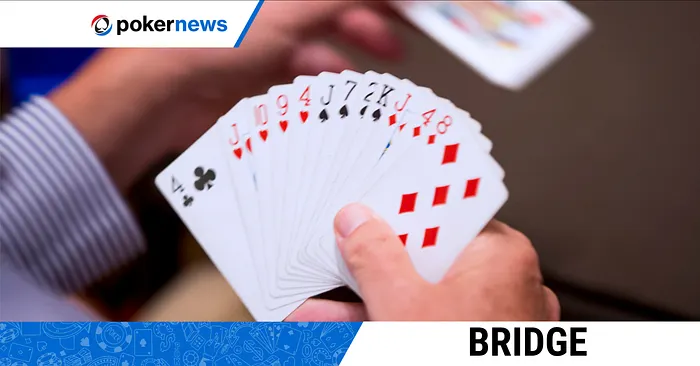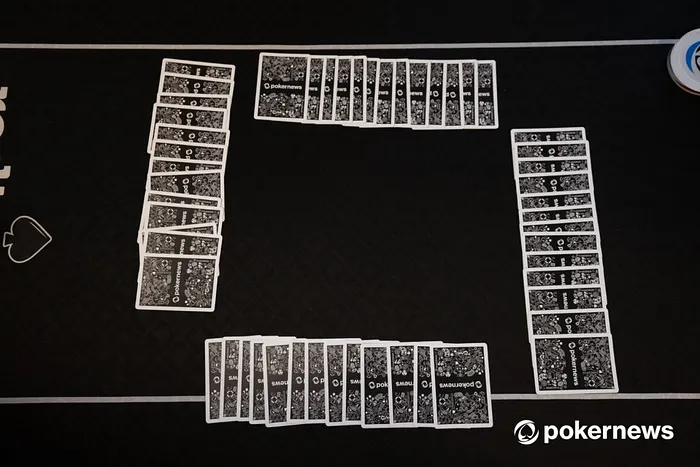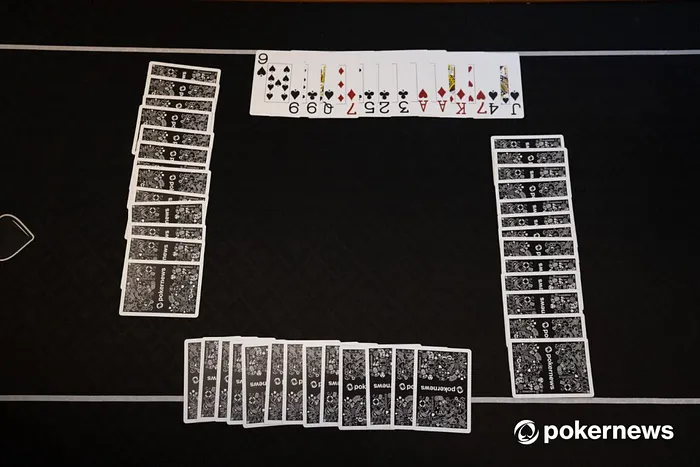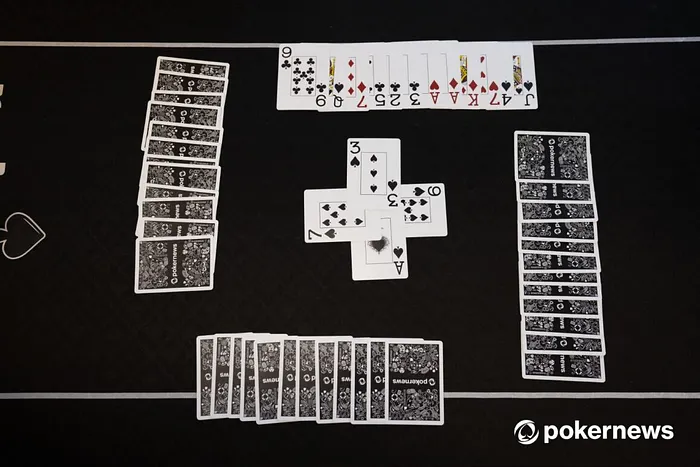Bridge Rules Explained

Welcome to the intriguing world of bridge, a card game that combines skill, strategy, and social interaction.
As a beginner, understanding the rules is the gateway to unlocking the full enjoyment of this timeless game. In bridge, each hand is a narrative of bids, tricks, and partnerships, and grasping the rules lays the foundation for a satisfying experience at the table.
From the fundamental concepts of dealing and bidding to the intricacies of declaring contracts and mastering advanced plays, we'll embark on a comprehensive journey. Whether you're looking to play socially or aspire to competitive excellence, a solid grasp of the rules is your passport to the rich tapestry of bridge.
So, let's unravel the complexities, bridge the gap between confusion and clarity, and pave the way for an enriching and enjoyable bridge-playing experience.
Basics of Bridge Rules
Bridge is a classic card game that combines strategy and social interaction. Understanding the fundamental rules is key to unlocking the potential for enjoyment and mastery.
Deck and Dealing
Bridge is played with a standard 52-card deck. The game involves four players, forming two partnerships. The players are assigned cardinal directions: North, East, South, and West. The dealer shuffles the deck and passes out 13 cards to each player. The cards are typically dealt in a clockwise direction, and the player to the left of the dealer makes the first bid.

Bidding and Gameplay Structure
Bidding is the heart of bridge, where players communicate information about their hands and decide on the trump suit or whether to play in no trump. The bidding process involves players taking turns to declare the number of tricks they anticipate winning and the suit or no trump they prefer. The highest bid determines the final contract for the round, setting the stage for the gameplay.
Once the bidding concludes, the player who made the final bid becomes the declarer, aiming to fulfill the contract by taking the specified number of tricks. Their partner becomes the dummy, revealing their cards face-up on the table. The remaining two players form the defense, working together to prevent the declarer from reaching their goal.
The play of the hand involves strategic card play, with players attempting to win tricks by playing the highest card in the led suit or by strategically playing trumps. The defenders aim to thwart the declarer's plans by taking tricks in suits where the declarer is weak.

Scoring in Bridge
Scoring in bridge adds a layer of complexity to the game. Points are earned based on the success or failure of the contracted number of tricks. For making a contract, a declarer scores points according to the level and suit. If the declarer achieves a contract with additional tricks, they earn bonus points called overtricks. Failing to meet the contract incurs penalties, known as undertricks.
Additional bonuses, such as game and slam bonuses, contribute to the overall score. In duplicate bridge, where the same hands are played at different tables, comparative scoring is used to determine winners.
Understanding the scoring system enhances your strategic approach, adding depth to the gameplay. As you delve into the rules and nuances of bridge, remember that practice is key. Embrace the challenges, enjoy the camaraderie, and let each hand be a step toward becoming a confident and skilled bridge player.
Bridge Bidding Rules
The bidding process in bridge is a fascinating dialogue between partners, crucial for determining the final contract and shaping the play of the hand. Let's break down the key components of bidding, from opening bids to conventions, and delve into the roles of the declarer and defenders.
Bidding Process
The bidding begins with the player to the left of the dealer, and each subsequent player can either make a bid or pass. The fundamental information conveyed in a bid includes the number of tricks the bidder expects to win and the suit or no trump preference.
Opening Bids
The player with the strongest hand typically initiates the bidding. An opening bid of one in a suit indicates the intention to win at least seven tricks in that suit. If the player opts for one no trump, it signifies the intent to win at least seven tricks without specifying a trump suit. The opening bid sets the stage for the partnership's communication.
Responses
After the opening bid, the partner has various responses. They can pass, bid in the same suit at a higher level, bid in a different suit, or respond with a bid in no trump. These responses help the opening bidder assess the strength and distribution of the partner's hand, guiding the partnership towards an optimal contract.
Conventions
Conventions are standardized bidding agreements that partners use to convey specific information about their hands. For example, the Stayman convention is employed after a one no trump opening bid to explore the possibility of a 4-4 major suit fit. Other conventions, like Blackwood and Gerber, assist in slam bidding by inquiring about the number of aces or kings in a partner's hand.
Role of Declarer and Defenders in Bidding
The player who makes the final and highest bid becomes the declarer, and their partner assumes the role of the dummy. The declarer aims to fulfill the contracted number of tricks by selecting the trump suit or no trump. The dummy lays their cards face-up on the table, becoming a passive participant.
The remaining two players form the defense. Their task is to assess the information revealed during bidding and plan a strategy to prevent the declarer from achieving the contract. Effective communication between defenders is vital, as they strive to take tricks and disrupt the declarer's plans.
Playing a Bridge Hand
Let's dive into the captivating world of playing a bridge hand, exploring the concept of tricks, following suit, declaring a contract, and the ultimate goal of fulfilling it.
Playing a Hand in Bridge
A bridge hand consists of a series of tricks, each involving four cards (one from each player). The player who plays the highest card in the led suit wins the trick and leads the next one. Understanding the hierarchy of suits is crucial, with spades and hearts being higher than diamonds and clubs. If a player can't follow suit, they can play any card, potentially changing the trump suit or creating opportunities for their partner.
Following Suit
When a suit is led, players are generally required to follow suit if they have a card of that suit. However, if a player cannot follow suit, they can play any card from their hand. Following suit is essential to winning tricks and maintaining control during the play of the hand.

Declaring a Contract
The bidding phase determines the contract for the hand. The player who makes the final and highest bid becomes the declarer. The declarer's goal is to fulfill the contracted number of tricks and achieve the specified contract. The partner of the declarer becomes the dummy, placing their cards face-up on the table and taking no active part in the play.
Fulfilling the Contract
The declarer's primary objective is to take the number of tricks specified in the contract. This involves strategic play, careful consideration of the opponent's cards, and effective use of the dummy's assets. The declarer begins by playing a card from their hand, and the defender to their left leads the first trick.
As the play progresses, the defenders aim to disrupt the declarer's plans by taking tricks of their own. The declarer, on the other hand, strategically maneuvers to achieve the contracted number of tricks. The concept of "setting" arises when the defenders successfully prevent the declarer from fulfilling the contract.
Scoring and Consequences
Scoring in bridge is based on whether the declarer fulfills, exceeds, or falls short of the contracted number of tricks. Points are awarded for making the contract, and additional points can be earned for overtricks. Conversely, failing to meet the contract results in penalties, known as undertricks.
Advanced Bridge Play
As you progress in your bridge journey, delving into advanced aspects of play will enhance your strategic prowess and elevate your game. Let's explore signaling, cardplay techniques, and advanced bidding conventions, along with strategies tailored for more experienced bridge players.
Signaling
Signaling is a sophisticated technique employed by defenders to communicate information about their holdings to their partner. Common signaling methods include attitude signals (indicating preference for a suit by playing high or low cards), count signals (revealing the number of cards held in a suit), and suit-preference signals (suggesting interest in a specific suit).
Cardplay Techniques
Advanced cardplay involves mastering techniques like finessing, squeezes, and establishing long suits. Finessing is playing a lower-ranking card with the intention of capturing a higher-ranking opponent's card. Squeezes exploit the opponents' positional vulnerabilities to force them into making unfavorable discards. Establishing long suits involves creating opportunities to develop and exploit the length of a suit in one's hand.
Advanced Bidding Conventions
Experienced players often incorporate advanced bidding conventions to convey precise information about their hand. Some examples include the Michaels cue bid (used to show a two-suited hand), the Lebensohl convention (providing a structured way to handle weak or invitational bids after a one no trump opening), and the Splinter bid (indicating a singleton or void in a suit).
Strategies for Experienced Players
Now, here are some things that you will commonly find amongst the more experienced Bridge players.
Partnership Understanding
Cultivate a deep understanding with your partner. Establishing a strong partnership understanding enables effective communication and shared strategic goals. Familiarity with your partner's bidding style, cardplay tendencies, and signaling methods enhances the overall synergy at the table.
Positional Awareness
Experienced players hone their positional awareness, recognizing the importance of where the cards are located. Understanding the position of key cards and leveraging that knowledge during the play and defense of the hand can significantly impact the outcome.
Adaptability and Flexibility
Bridge is a dynamic game, and experienced players exhibit adaptability and flexibility. Be prepared to adjust your strategy based on the evolving dynamics of the hand. This includes modifying your bidding plans, reassessing your declarer play, or altering your defense based on new information.
Continuous Learning
Bridge is a game of lifelong learning. Stay abreast of new conventions, cardplay techniques, and strategic approaches. Engage in discussions with fellow players, attend workshops, and analyze hands to glean insights into evolving strategies and trends in the bridge community.
Bridge Rules FAQs
What are the basic rules of bridge?
Bridge is played with four players in two partnerships, using a standard 52-card deck. The game involves dealing, bidding, and playing hands to fulfill contracts. Understanding the hierarchy of suits, following suit, and strategic bidding are fundamental aspects of the game.
When not to use the rule of 20 in bridge?
The rule of 20 is generally used during the opening bid to evaluate the strength of a hand. However, it might not be suitable for hands with a void or a singleton, as these can impact the overall strength and distribution of the hand.
What are the bidding rules of bridge?
Bidding in bridge involves players declaring the number of tricks they expect to win and the preferred suit or no trump. Bidding proceeds in a clockwise direction, with each player making a bid or passing.
What is the rule of 15 in bridge?
The rule of 15 is a guideline used in the opening bid, suggesting that a hand is suitable for opening if the sum of high card points and the number of spades is 15 or more. It helps players assess the strength and distribution of their hands for strategic bidding decisions.
